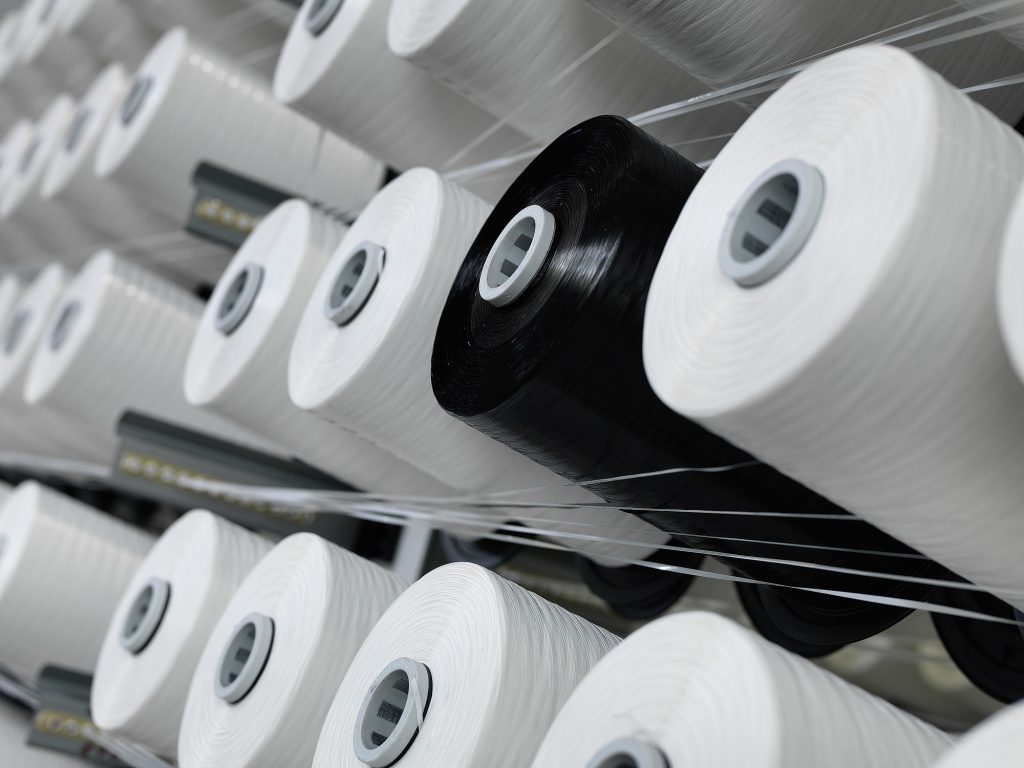
- 1. Introduction: The Dual Imperative of Performance and Sustainability
- 2. Social Impact and Economic Benefits of PP-Based FIBC Bags
- 3. Future Trends: Innovating for a Greener Supply Chain
- 4. Case Study: FIBC Bags in Construction Waste Management
- 5. Market Expansion and Regulatory Alignment
- 6. Conclusion: Redefining Bulk Packaging Through Innovation
“Why are FIBC (Flexible Intermediate Bulk Container) bags becoming the cornerstone of sustainable bulk packaging in industries like agriculture, chemicals, and construction?”
The answer lies in their unparalleled capacity to balance cost-efficiency, durability, and environmental responsibility through advanced polypropylene (PP) recycling systems and innovative material science. VidePak, a global leader in woven bag manufacturing, exemplifies this balance by leveraging 100% recyclable PP and cutting-edge production technologies to meet the evolving demands of a $12.3 billion FIBC market projected to grow at 6.8% CAGR through 2030.
1. Introduction: The Dual Imperative of Performance and Sustainability
FIBC bags, capable of holding 500–2,000 kg of materials, are indispensable for industries requiring bulk transport solutions. However, modern market demands extend beyond load capacity—companies now prioritize ESG compliance, recyclability, and carbon footprint reduction. VidePak’s FIBC bags, produced using Austrian Starlinger machinery and virgin PP resins, address these needs by achieving tensile strengths exceeding 45 N/cm² while maintaining full recyclability.
Key Insight:
“Sustainability isn’t a trade-off for performance. Our FIBC bags use 30% less material than a decade ago but withstand 50% higher loads—proof that innovation drives both profit and planet.”
— Ray, CEO of VidePak
2. Social Impact and Economic Benefits of PP-Based FIBC Bags
2.1 Environmental Advantages of Recyclable PP
- Closed-Loop Recycling: VidePak’s FIBC bags are 100% recyclable, with 98% of production scraps reintegrated into new products. This reduces reliance on virgin plastics and aligns with the EU’s Circular Economy Action Plan.
- Carbon Footprint Reduction: Compared to single-use alternatives, reusable FIBC bags lower CO₂ emissions by 40% over their lifecycle, as validated by a 2024 study in Advanced Materials Journal.
| Parameter | VidePak FIBC Bags | Traditional Bags |
|---|---|---|
| Recyclability Rate | 100% | 5–20% |
| CO₂ Emissions (kg/ton) | 12 | 28 |
| Average Reuse Cycles | 8–12 | 1–3 |
2.2 Economic Value Through Strategic Sourcing
VidePak partners with PP resin giants like BASF and Sinopec under long-term contracts, securing:
- Cost Stability: 10–15% price discounts despite volatile raw material markets.
- Quality Assurance: PP resins meet ASTM D5261 and ISO 527-2 standards, with melt flow indices (MFI) controlled within 8–12 g/10 min to ensure uniform extrusion.
3. Future Trends: Innovating for a Greener Supply Chain
3.1 Systemic Recycling Infrastructure
VidePak is piloting a blockchain-tracked recycling system in the EU, enabling:
- Real-Time Material Tracing: Consumers scan QR codes to locate nearest recycling hubs.
- Incentivized Returns: Rebates for returning used FIBC bags, boosting recovery rates to 75% (vs. the industry average of 30%).
3.2 Bio-Based and Degradable Materials
- Plant-Derived PP: Collaborating with Braskem, VidePak is testing FIBC bags made from 30% sugarcane-based PP, reducing fossil fuel dependency by 2030.
- Oxo-Degradable Additives: Trials show these additives enable FIBC bags to decompose within 5 years in landfills, addressing concerns about microplastic pollution.
4. Case Study: FIBC Bags in Construction Waste Management
A 2024 partnership with a Dubai-based construction firm demonstrated:
- Cost Savings: Reusable FIBC bags reduced packaging costs by 22% over 12 months.
- Waste Reduction: 98% of bags were recycled, diverting 120 tons of plastic from landfills.
FAQs:
- How do FIBC bags compare to metal containers?
FIBC bags weigh 80% less, reducing shipping costs by $1.2–$2.5 per ton. - Are VidePak’s FIBC bags food-grade compliant?
Yes—they meet FDA CFR 21 standards for food and pharmaceutical use.
5. Market Expansion and Regulatory Alignment
With $80M annual revenue, VidePak dominates sectors including:
- Agriculture: UV-stabilized bags for fertilizer storage.
- Chemicals: Anti-static FIBC bags for explosive powders.
- Construction: PE-coated bags resistant to abrasion and moisture.
Future Outlook:
- Smart FIBC Bags: Integrating IoT sensors for humidity and load tracking (piloted with a German chemical conglomerate).
- ESG Reporting: Transparent disclosures on carbon savings attract LEED-certified clients, boosting B2B sales by 18% in 2024.
For deeper insights, explore our guides on sustainable FIBC bulk bags and advanced PP recycling.
6. Conclusion: Redefining Bulk Packaging Through Innovation
VidePak’s FIBC bags exemplify how industrial packaging can harmonize economic efficiency with planetary stewardship. By prioritizing recyclable PP, systemic recycling, and bio-innovation, the company not only meets global market demands but sets a benchmark for the industry’s sustainable transformation.
Final Perspective:
“The future of packaging isn’t just about containing materials—it’s about sustaining ecosystems. FIBC bags are our vehicle to that future.”
— Journal of Sustainable Industrial Practices, 2025